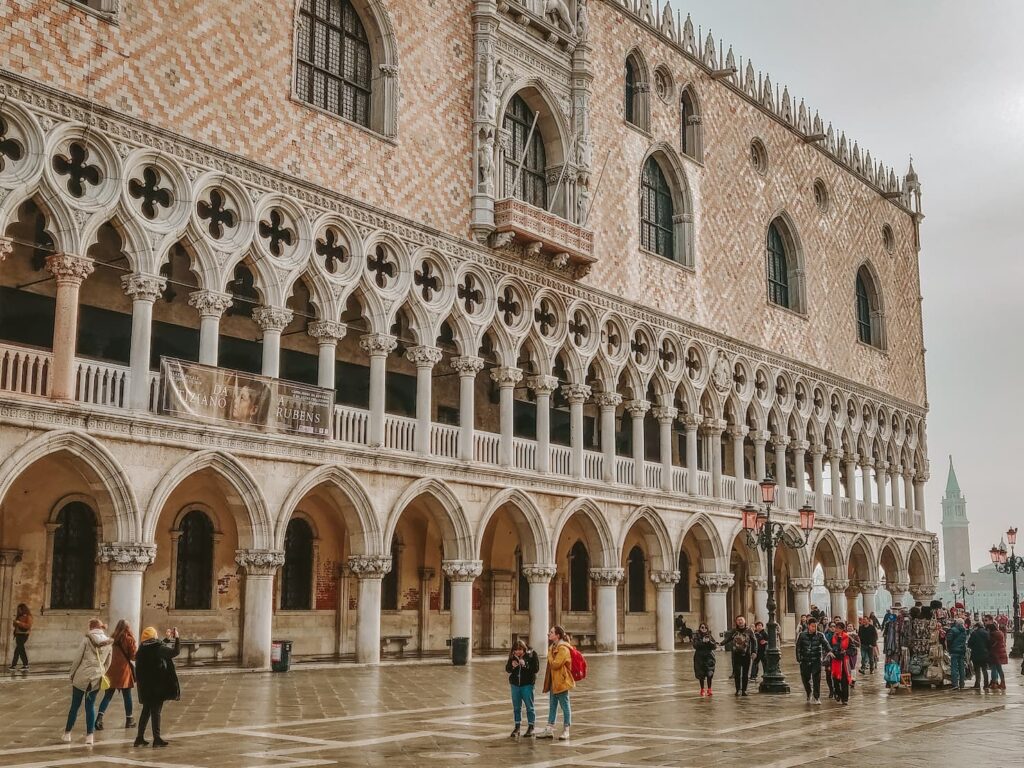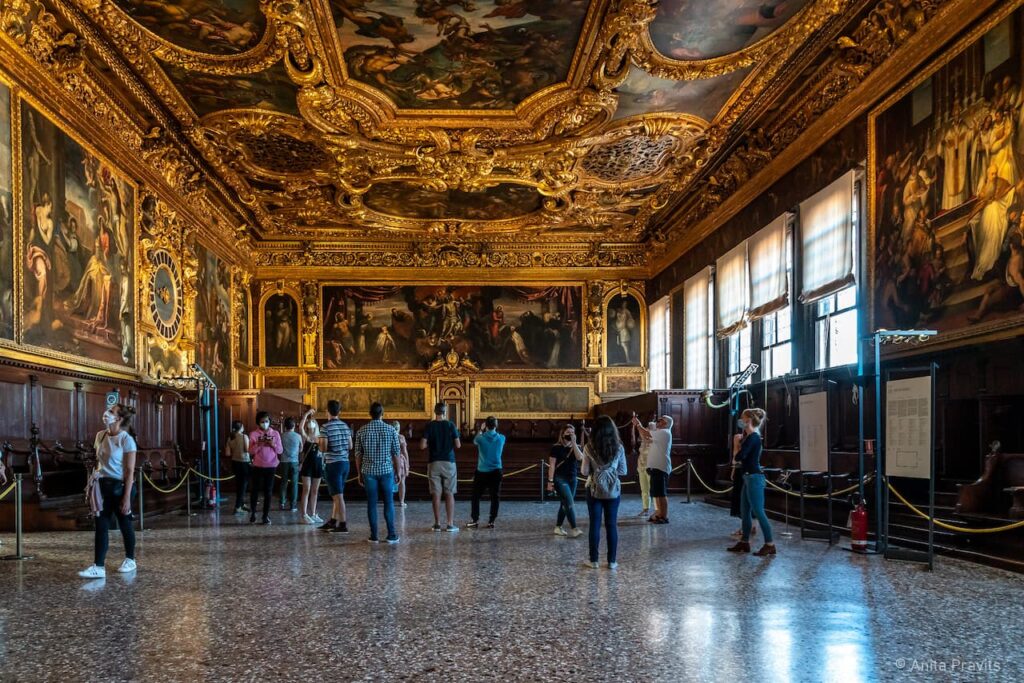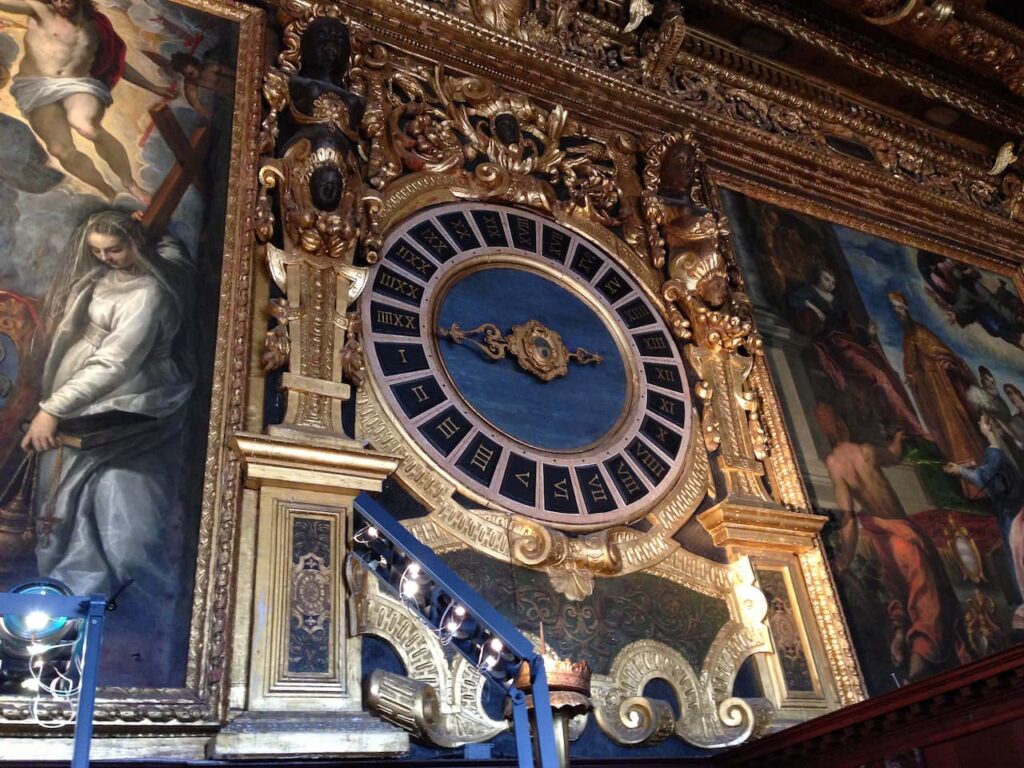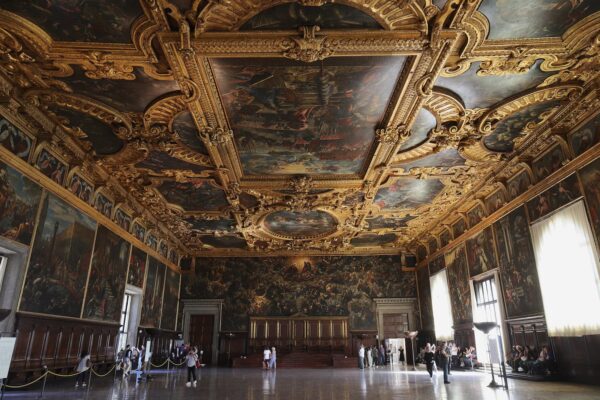The Senate Hall, also known as the Sala dei Pregadi, was used for meetings of the Venetian Senate, an ancient institution dating back to the 13th century. This body was responsible for overseeing economic, trade and foreign political issues and was only accessible to members of the most influential families. After a fire in 1574, the room was renovated in the 1580s and the pictorial decoration was completed in 1595.
Let us discover together the history, architecture and works contained within the Senate Hall of the Doges’ Palace in Venice.
Before we begin, a brief preamble: if you plan to visit the Doge’s Palace in Venice, the Senate Hall and all the other rooms, it is strongly recommended to buy your ticket online, to avoid the long queue that may form at the ticket office. By purchasing your ticket in advance, you will be able to access the Palace by skipping the queue at the entrances.

Doge’s Palace Venice skip-the-line ticket: quick access
Buy online. Choose your preferred time. Visit the Doge’s Palace of Venice, the Hall of Great Council, the prisons and more.
You can cancel for free up to the day before your visit.
Senate Hall of the Doge’s Palace: history

The Senate, also known as the Council of Pregadi, was an institution composed of sixty patricians and a commission of patricians of equal number, called ‘zonta’.
This room was restored after a fire by the architect Antonio da Ponte.
Works and paintings

A wooden ceiling houses, in the central part, the painting The Triumph of Venice by Domenico Tintoretto, surrounded by various works celebrating the Republic.
The figurative cycle shows the illustrious works of several doges and is placed above the senators’ seats. Prominent among these are paintings by Tintoretto, such as The Dead Christ Adored by Doges Pietro Lando and Marcantonio Trevisan.
The other walls have fearsome allegories, mainly by Palma il Giovane but in which other artists, including Domenico Tiepolo, Marco Vecellio and Tintoretto took part.
Palma il Giovane’s work is The Allegory of Victory over the League of Cambrai, painted around 1590. It was commissioned to celebrate the war between Venice and the other European powers that had ganged up against her using the League of Cambrai. Doge Leonardo Loredan is the main protagonist of the painting.
The ceiling, made by Cristoforo Sorte in 1581, is decorated with impressive gilded wooden frames displaying works by artists such as Tintoretto, Marco Vecellio, Andrea Vicentino, Antonio Vassilacchi, Tommaso Dolabella, Palma il Giovane and Gerolamo Gambarato. The gilded wooden frame is made of cartouches, volutes and festoons.
The walls of the hall are adorned with two clocks, one of which displays allegorical scenes, zodiac signs and votive paintings from the late 16th century.
Conclusions
We have come to the end of this description of one of the most fascinating rooms of the Doge’s Palace in Venice, in which we have seen the history, architecture and works inside.
If you would like more information, read the article on the interior of the Doge’s Palace, or the one on the Hall of Great Council, the largest and most important of the entire building.

Doge’s Palace Venice skip-the-line ticket: quick access
Buy online. Choose your preferred time. Visit the Doge’s Palace of Venice, the Hall of Great Council, the prisons and more.
You can cancel for free up to the day before your visit.
Photo credits:
- Photo by Anita Pravits via Flickr
- Photo by Shay Tressa DeSimone via Flickr


